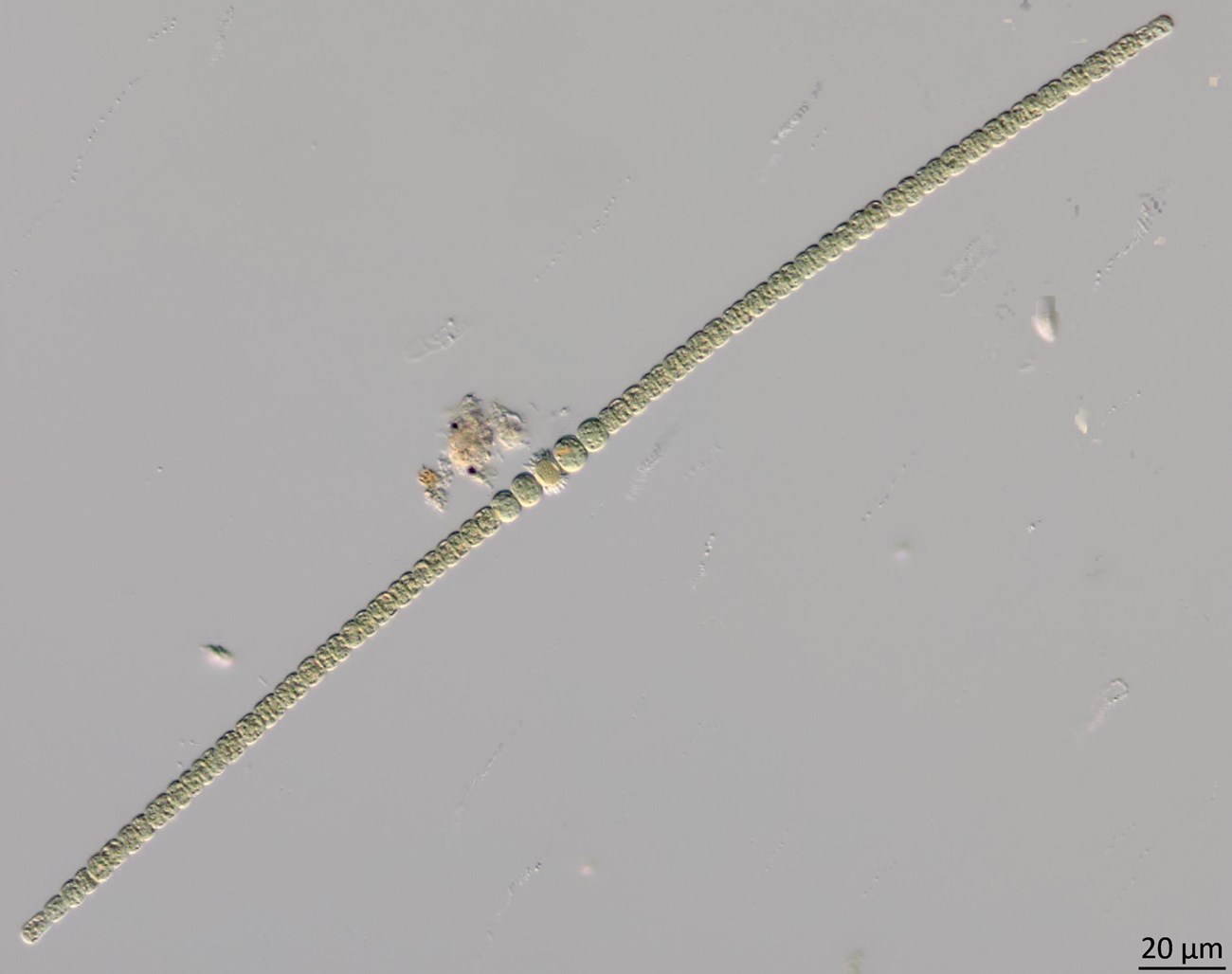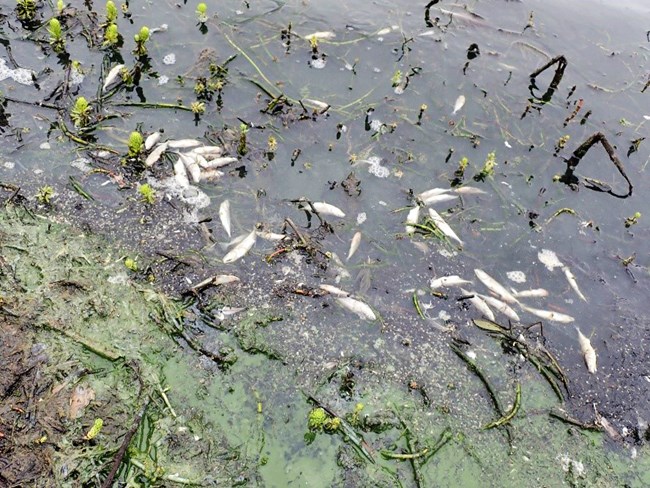Last updated: April 7, 2021
Article
What’s All the Stink About in Rodeo Lagoon?

Barry H. Rosen, Ph. D. / Florida Gulf Coast University
March 2021 - Researchers with the USGS California Water Science Center having been working with the National Park Service on a smelly issue at Rodeo Lagoon in the Marin Headlands, Golden Gate National Recreation Area. Rodeo Lagoon is a small and slightly salty body of water that connects infrequently to the Pacific Ocean, and it’s home to endangered species like tidewater gobies. And sometimes, as visitors to Rodeo Beach have probably noticed, it stinks. Decaying blue-green algae, also known as cyanobacteria, is the source of the smell, but what kinds of cyanobacteria exactly? Until this recent round of research, researchers didn’t really know.
Large concentrations of various types of cyanobacteria, called algae blooms, are becoming more frequent at Rodeo Lagoon. They turn the water a vivid green pea soup color and their collapse doesn’t just smell awful. It can also cause oxygen in the lagoon to drop to levels that can’t support life, leading to fish kills. Furthermore, some cyanobacteria produce toxins that can cause serious injury or death when ingested by people, pets, or wildlife. This is where knowing the specific culprits of an algae bloom is so important. Some cyanobacteria produce more or less potent toxins. And while some species sink to the bottom where their toxins are less likely to be a problem, others float to the surface and accumulate along the shoreline where they can cause serious issues.

NPS
In July and August 2020, the researchers collected water samples from various parts of the lagoon, and then analyzed portions of the samples under powerful microscopes. They found five abundant cyanobacteria genera: Nodularia, Planktothrix, Microcystis, Anabaenopsis, and Sphaerospermopsis. The latter two were the most surprising finds, since they are not common bloom-formers. And interestingly, Nodularia, Anabaenopsis, and Sphaerospermopsis are nitrogen fixers. They could be finding success due to limited nitrogen in the ecosystem and perhaps producing the nitrogen needed by Planktothrix and Microcystis. All are known to produce harmful liver toxins or neurotoxins.
Because these algae blooms are concerning on so many levels, from their smell to their apparent toxicity, Golden Gate staff are continuing to work with USGS researchers to figure out their root causes. Past studies point to lagoon sediments as the potential source of the nutrients fueling the blooms. So now, USGS researchers are investigating the transfer of nutrients between sediments and water, where the nutrients are distributed within the lagoon, and the interaction with bloom occurrences. Hopefully, learning some of the answers will offer park management clues about what they can do to reduce harmful blooms in the future.
For more information
- Contact Golden Gate Aquatic Ecologist Darren Fong
